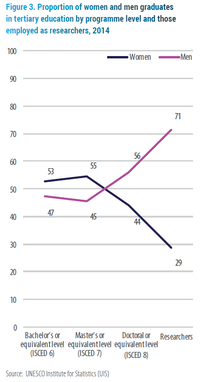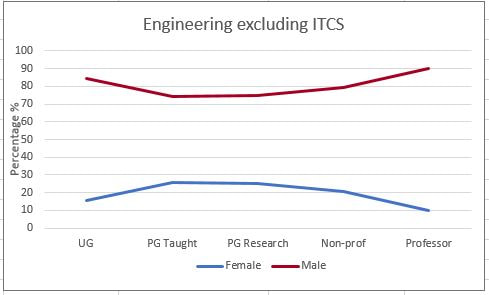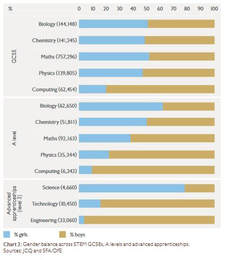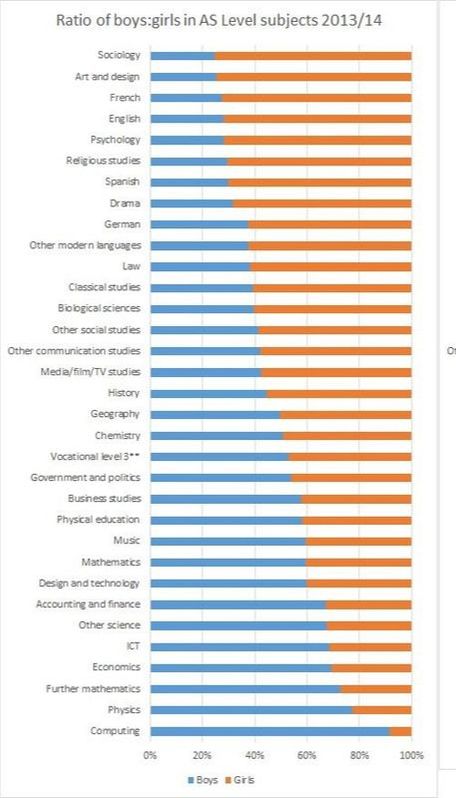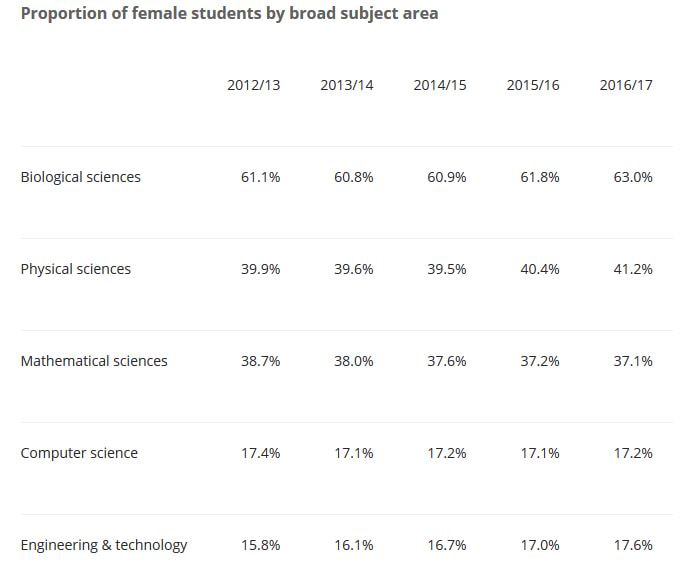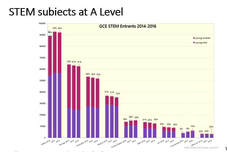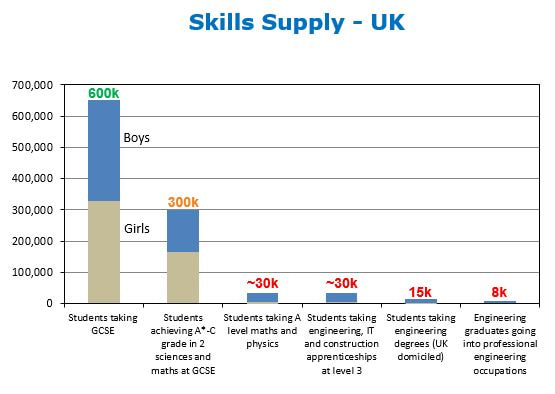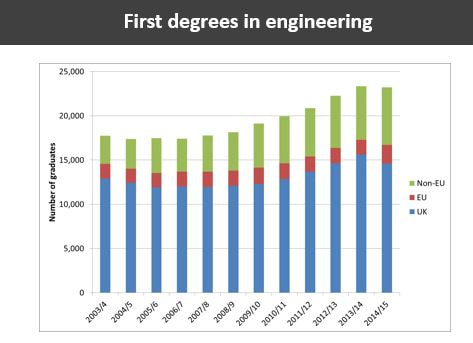Statistics relating to gender
gcse to a level
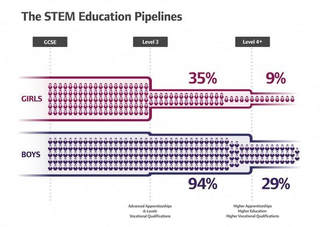
There is a huge drop off in the number of girls studying core STEM subjects at the age of 16. Just 35% of girls choose maths, physics, computing or a technical vocational qualification compared to 94% of boys. This reduces the number going on to do a degree or level 4 qualification in maths, physics, computer science or engineering – 9% of girls compared to 29% of boys.
Reference The Wise Campaign
Reference The Wise Campaign
- 34% of 7-11-year-old females expressed an interest in engineering, compared to 59% of boys (EngineeringUK Brand monitor survey)
- 20% girls take physics A level. From these, 40% of boys go on to an engineering course and only 25% of the girls (so out of every 100 physics students 5 girls and 32 boys go into an engineering course)
- Half of all state schools in the UK don't have any girls studying physics A level
Stereotyping in school
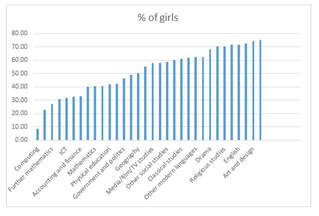
Gender stereotyping in schools is one reason why girls don't choose more STEM subjects. Here is a graph to show the national average of pupils taking particular school subjects at A level.
See my idea for measuring gender stereotyping in school here. Gatsby's Key Indicators in STEM Education According to data from the Independent Schools Council, published in 2016, the GCSE performance for girls and boys is higher in a Diamond Model environment (which involves STEM lessons moving from mixed classes in lower years, to single-sex lessons between the ages of 13-15, and then back to mixed sixth form lessons) than in a fully co-ed one, with 96.4% of girls achieving five A*-C grades compared to 89.7% in a co-ed environment, and 97.8% of boys achieving five A*-C grades compared to 87.6% apprenticeships
Higher Education
HESA data for 2016/17 is available here.
Research and Academia
(According to UNESCO, women represent less than 30% of the STEM R&D workforce worldwide. Ref. the SAGA Toolkit
The 'Scissor Diagram' for Women in tertiary education on the left below from the same report shows the problem clearly, and the graph on the right shows the problem in engineering (2016/17) in the UK, where the handles of the scissors don't even come close!
According to EPSRC during their Inclusion Matters funding call in 2017:
Professionally registered engineers
Annual Registration Statistics Report 2017 from the Engineering Council shows that 5.6% of registrants overall are female. Among new final stage registrants in 2017, 10.66% (across all titles) are female, up from 8.57% in 2013; among new final stage Chartered Engineer registrants, 13.09% are female.
Careers in engineering
|
gender pay gap
In the UK in 2017 the gender pay gap stands at 9.1% for full time workers, and 18.4% for full and part-time workers. See this page for further break down.
worldwide view
Female participation in Engineering (from Engineering and Economic Growth: A Global View, Royal Academy of Engineering, September 2016)
Myanmar (65%), Tunisia (42%) and Honduras (41%) lead the world in gender parity among engineers, according to the latest data on female engineering graduates from the UNESCO. Of the countries where date is available, the gender gap is biggest in Ghana and Saudi Arabia. However, many richer countries such as Japan, Switzerland and the US have a poor recent record in this area. The latest UNESCO data shows that only 12.5% of Japanese engineering graduates in 2013 were women, followed by 14% in Switzerland and 18.9% in the US.
Women only make up 22% of engineering graduates in the UK. While the UK outperforms some CAETS countries in this regard, it is behind twelve CAETS countries for which data is available, including Denmark (35%), India (30%) and Sweden (29%). Across the 99 countries considered in the study the UK ranks 58th in gender parity, also lagging behind countries such as New Zealand, Brazil and Greece.
Download a list of global women in engineering reports here.
Myanmar (65%), Tunisia (42%) and Honduras (41%) lead the world in gender parity among engineers, according to the latest data on female engineering graduates from the UNESCO. Of the countries where date is available, the gender gap is biggest in Ghana and Saudi Arabia. However, many richer countries such as Japan, Switzerland and the US have a poor recent record in this area. The latest UNESCO data shows that only 12.5% of Japanese engineering graduates in 2013 were women, followed by 14% in Switzerland and 18.9% in the US.
Women only make up 22% of engineering graduates in the UK. While the UK outperforms some CAETS countries in this regard, it is behind twelve CAETS countries for which data is available, including Denmark (35%), India (30%) and Sweden (29%). Across the 99 countries considered in the study the UK ranks 58th in gender parity, also lagging behind countries such as New Zealand, Brazil and Greece.
Download a list of global women in engineering reports here.
